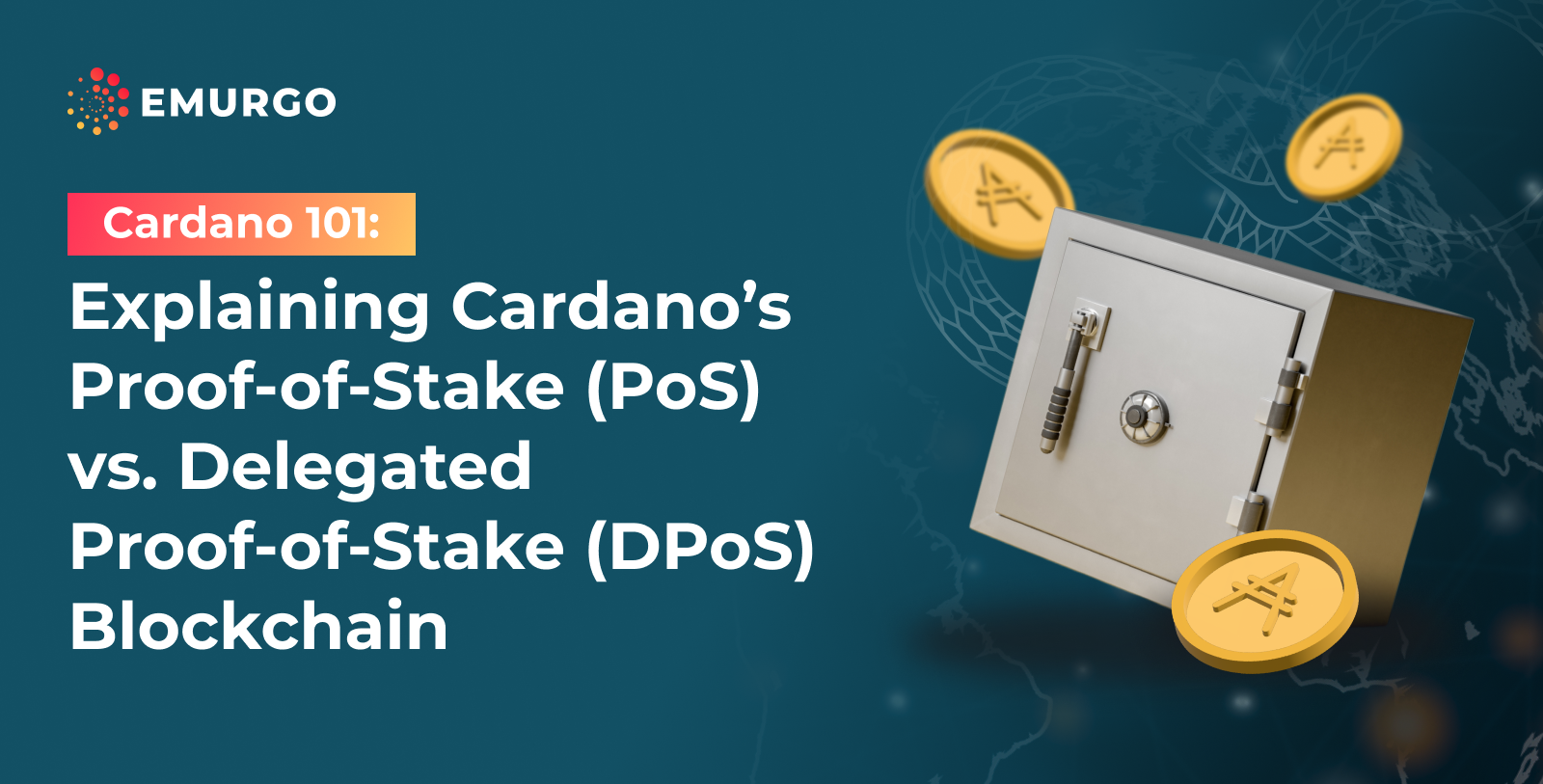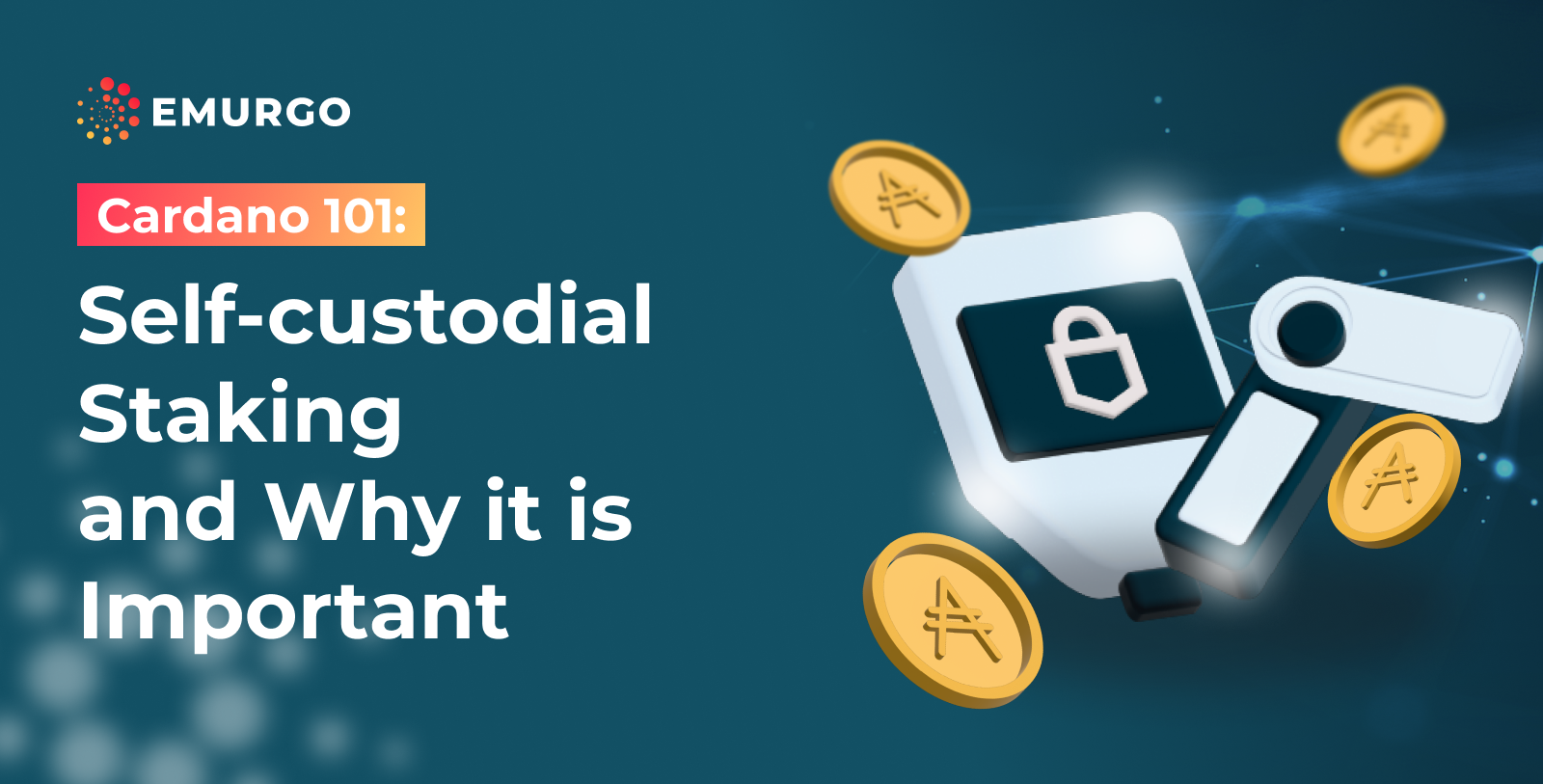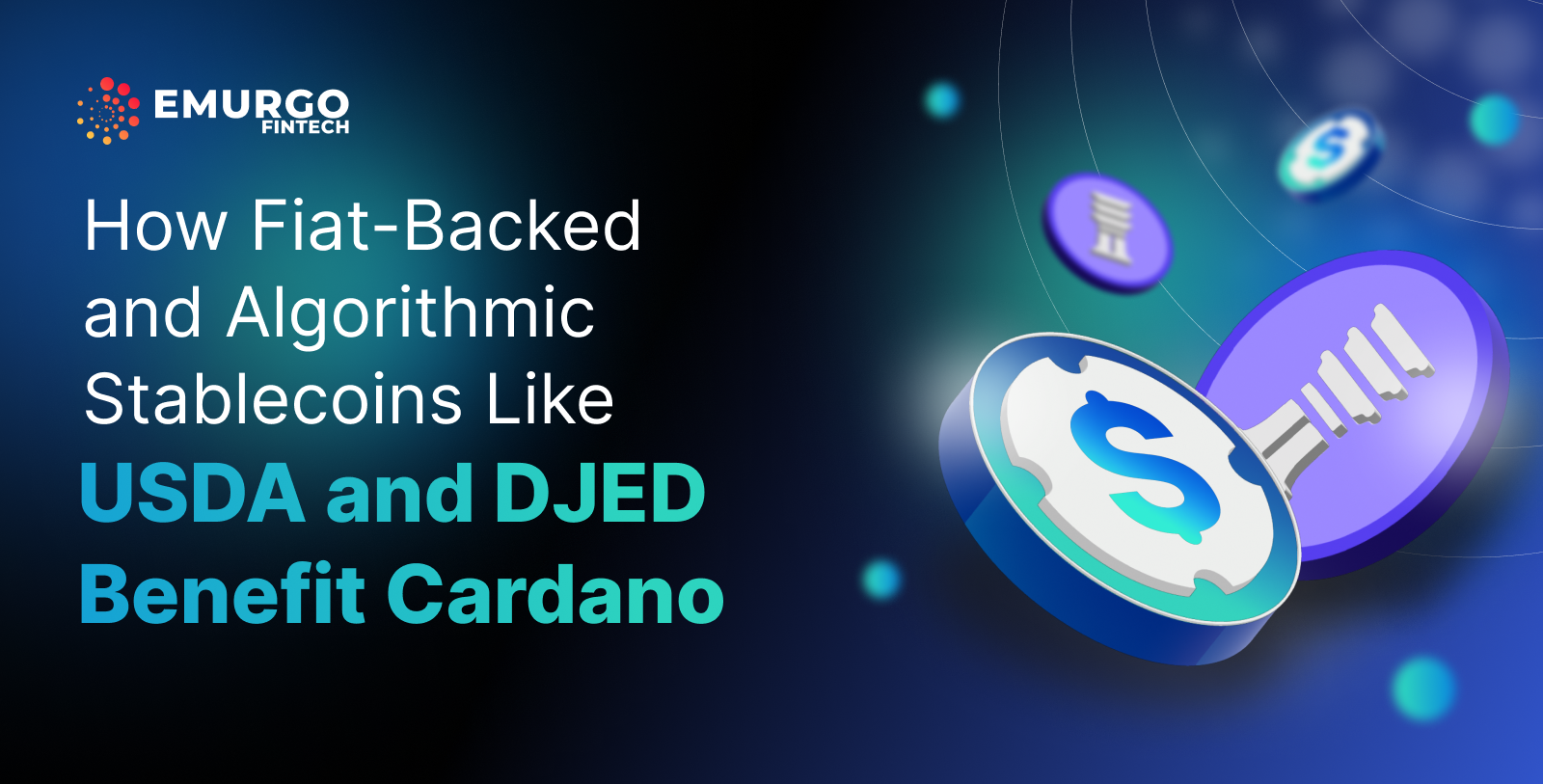Introduction
Cardano – a third-generation blockchain based on a scientific, peer-reviewed philosophy – utilizes an environmentally-friendly Proof-of-Stake (PoS) protocol called Ouroboros for its consensus mechanism to achieve the same decentralized security guarantees as Bitcoin – a first-generation blockchain.
A consensus mechanism is how a decentralized blockchain secures its network and transaction records.
Delegated Proof-of-Stake (DPoS) is another type of blockchain consensus mechanism available today.
There are many similarities between DPoS and PoS.
Both rely on on-chain resources (i.e. stake in the system) rather than off-chain resources (i.e. hashing power with Bitcoin) to achieve consensus in the network.
Consensus is important to securing the network and especially important with a decentralized public blockchain where anyone can join the network.
In this post, we will look at the specific differences between DPoS and Cardano’s PoS system.
Consensus Protocol – A General Overview
A consensus protocol involves a situation where a group of people has to decide what the state of a system should be.
All decentralized blockchains that involve cryptocurrencies have the notion of changing from one state to another state due to evolving data records as time passes since transactions continue to be verified and processed.
When one person transacts with another, there must be a process to transfer that value on the transparent blockchain.
A consensus algorithm defines how this takes place, and who is involved.
First-generation Bitcoin innovated in a unique way by creating a merit-based lottery system, where parties do work to secure the network, and those who do the work get issued a digital lottery ticket.
Eventually, the winner of the lottery would progress the network by advancing the network from A to B and receive Bitcoin as a reward for their efforts.
However, this is an energy-intensive method that requires the heavy usage of hardware and energy resources such as mining equipment and electricity.
Both DPoS and Cardano’s PoS achieve this distributed network security but without the use of a mass amount of specialized mining equipment and a large amount of electrical power.

Cardano’s PoS vs. DPoS
Ouroboros – the first provably secure proof-of-stake consensus algorithm – is the solid backbone of the Cardano blockchain.
Cardano’s native cryptocurrency ada is referred to as “stake,” and instead of miners (as in Bitcoin) there are ada “stakeholders” in the Cardano blockchain network.
Cardano’s PoS system uses a randomized process to elect a stakeholder to produce a block, based on the weight of the stake recorded in the network.
A block of time in the Cardano blockchain is an epoch and the individual units of time within an epoch are slots.
Not all stakeholders have the expertise to produce a block if elected, so stakeholders can pool their resources by delegating their ada stake to stake pools.
The managers of these stake pools, known as stake pool operators (SPOs), manage block production during slots where the stake delegated to them is elected by the Cardano Ouroboros algorithm.
These rewards are then automatically shared with the stakeholder.
In a DPoS system, stakeholders vote on who is responsible for producing blocks.
This is different from Cardano’s PoS, where the stake is delegated to stake pools rather than used as a voting mechanism.
The voting power of each person is weighted to the number of cryptocurrency a person owns.
These block producers are responsible for grouping transactions into a block and broadcasting it to the network.
These block producers receive rewards for progressing the network.
DPoS is designed in a way that block producers who fail to perform their duties can be voted out as delegates in elections.
A DPoS system relies on a fixed amount of delegates to be voted on, meaning there is a set amount of parties allowed to progress the network.
This is vastly different from Cardano, as network simulations on the Cardano blockchain have shown that Cardano’s blockchain can effectively operate with thousands of running pools which ultimately creates a more distributed, decentralized, and secure network.
Cardano blockchain explorers can transmit and reflect this data about transactions, stake pools, and other Cardano blockchain data in real time.
More: What is a blockchain explorer?
Both Cardano PoS and DPoS systems require synchronizing with the blockchain in order to participate.
In a PoS system, a long-range attack can potentially take place when a bad actor silently produces a very long chain that forks from the blockchain far in the past, resulting in confusion when nodes (servers running a copy of the blockchain) are presented with a chain that is potentially even longer than the real one.
Cardano’s solution to this is known as Bootstrapping From Genesis, in which the chain which is densest is always chosen.
This is the chain with the most level of participation and transactions. This was introduced into Cardano with the launch of the Shelley mainnet.
A helpful metaphor for Bootstrapping from Genesis is to think of a fork in the road with a driver needing to decide which road to drive down. Each road represents a copy of the blockchain.
In Bitcoin, the longest road is always the correct road, because it required a lot of energy and work to pave the road, which an attacker cannot simply reproduce.
Bootstrapping from Genesis means the road with the most amount of cars on it, people crossing, and overall participation is the one chosen over a longer road that looks to be abandoned.
In a DPoS system, the blockchain with the highest block producer participation is chosen.
A block producer operating alone is assumed to have a lower participation rate than the majority.
There is nothing that a dishonest minority can do to replicate a blockchain with a higher participation rate than the main blockchain with a higher participation rate.
In DPoS if the network fragments, the longest chain will be the one that achieves consensus.
Conclusion
Cardano’s Ouroboros protocol was designed with the philosophy that the ones who own the ada cryptocurrency are the ones ultimately best placed to decide a good outcome for the Cardano system.
This is because the owners of the ada cryptocurrency are seen to have a “stake” in the system.
Bad actors in the network who try to distort the system will see their actions reflected in the price of the blockchain, meaning it is not in their best interest to go against consensus rules.
Furthermore, Cardano’s PoS protocol is not susceptible to external forces such as hashing power, where a more powerful adversary can take down a system through superior energy resources.
DPoS is designed with a similar philosophy in that those responsible for maintaining the system should be those who have the greatest incentive for its continuation.
DPoS requires a select number of parties voted by stakeholders to continue the network, as opposed to Cardano’s PoS system in which anyone has the potential power to validate blocks of transactions.
These are the fundamental differences between Cardano’s PoS and a DPoS blockchain.
Cardano’s PoS will allow a more distributed and decentralized blockchain than DPoS, due to the higher number of block producers.
This decentralization enables distributed trust from a single point of weakness to a much more secure set of actors that distributively and collaboratively produce the same service.
This results in a better and more robust, secure blockchain network.
Stake Cardano ada with Yoroi Wallet
Developed by EMURGO, Yoroi is an open-source crypto light wallet for Cardano ada cryptocurrency holders to easily participate in staking on the Cardano blockchain.
Through the Yoroi dashboard, ada users can stake their ada to secure Cardano’s network.
Yoroi is available for mobile and desktop browsers and enables Cardano ada users to interact with the Cardano dApp ecosystem of dApps including the $USDA stablecoin.
About EMURGO
- Official Homepage: dev.emurgo.io
- Twitter (English): @emurgo_io
- YouTube: EMURGO
- Discord: EMURGO Community
- Facebook: @dev.emurgo.io
- Instagram: @emurgo_io
- LinkedIn: @emurgo_io
About Yoroi Wallet
- Yoroi Twitter: @YoroiWallet
- Yoroi Homepage: https://yoroi-wallet.com/



